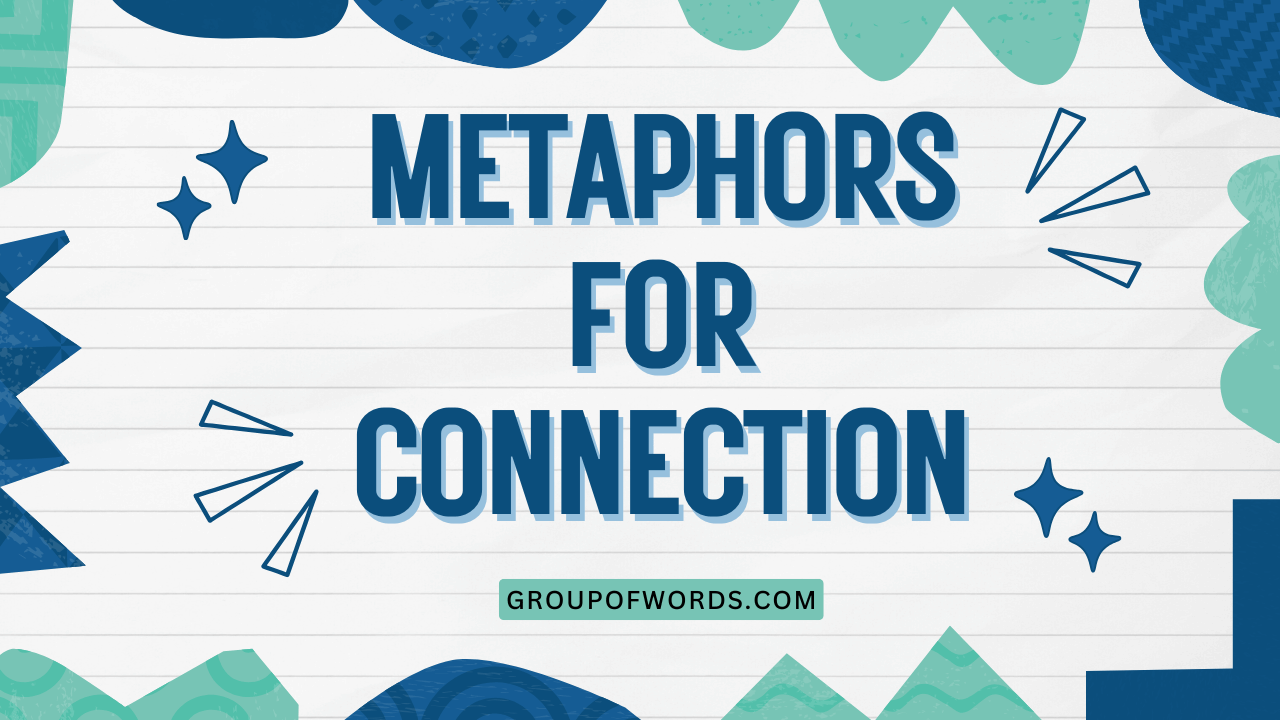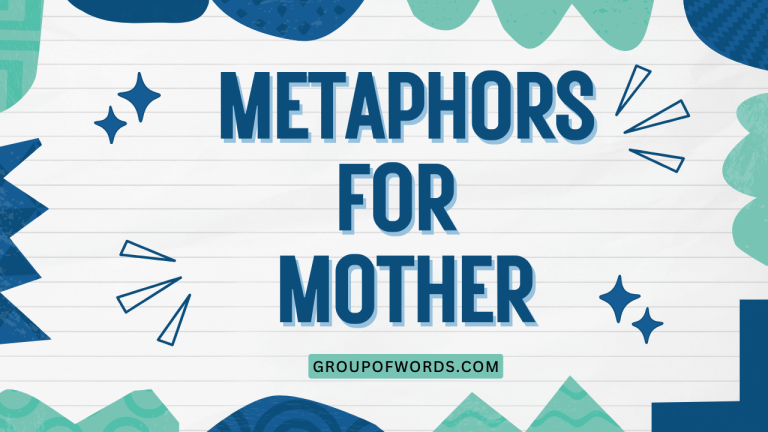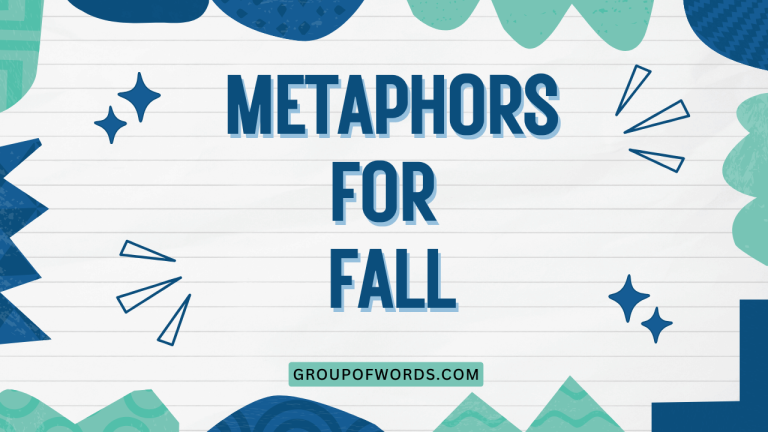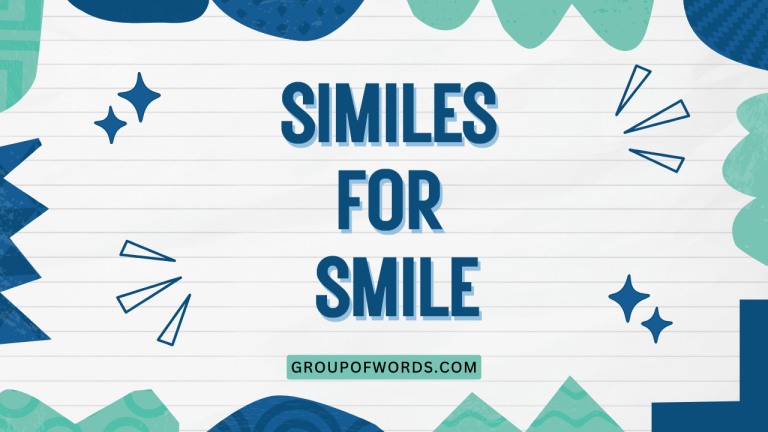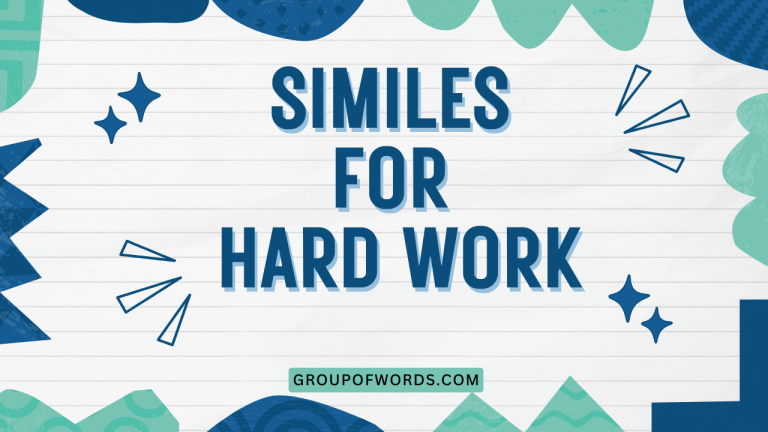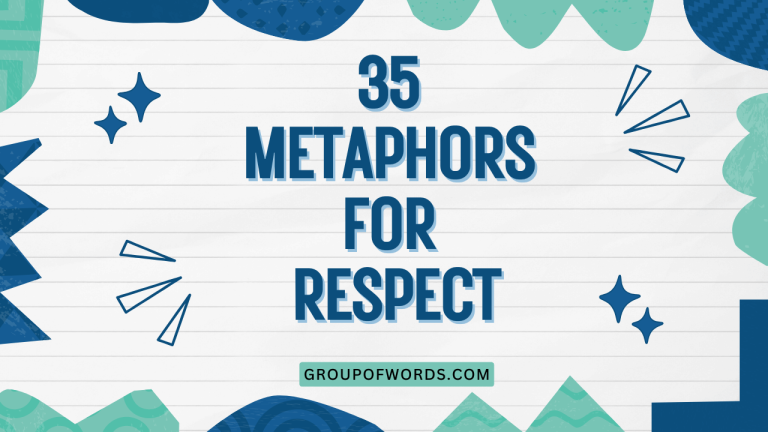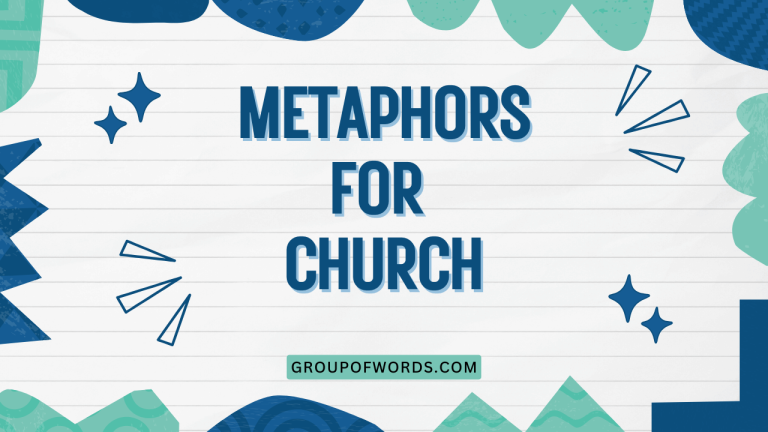Metaphors for Connection: Building Bridges with Language
Understanding metaphors for connection is crucial for mastering the nuances of English. These metaphors, which use abstract concepts to describe relationships, enhance communication and add depth to our language.
This article explores the various types of connection metaphors, their structural components, and how to use them effectively. Whether you’re an ESL student, a writer looking to enrich your prose, or simply someone interested in language, this guide will provide valuable insights into the art of linguistic connection.
Table of Contents
- Introduction
- Definition of Metaphors for Connection
- Structural Breakdown
- Types and Categories of Connection Metaphors
- Examples of Connection Metaphors
- Usage Rules
- Common Mistakes
- Practice Exercises
- Advanced Topics
- FAQ
- Conclusion
Definition of Metaphors for Connection
Metaphors for connection are figures of speech that describe relationships between people, ideas, or things by comparing them to something else. These metaphors often use concrete images to represent abstract connections, making complex relationships more understandable and relatable.
They are a powerful tool in communication, adding depth and emotional resonance to language.
In essence, a metaphor for connection operates by drawing a parallel between the relationship at hand and another, typically more tangible, concept. This allows us to conceptualize the abstract nature of connections through the lens of something we can readily grasp. For example, instead of simply saying “they have a strong relationship,” we might say “they are bound together,” using the tangible image of physical binding to convey the strength and closeness of their relationship.
Metaphors for connection can be classified based on the domain from which they draw their imagery. Common domains include spatial relationships (e.g., “close to”), physical materials (e.g., “woven together”), mechanical devices (e.g., “gearing up”), electrical circuits (e.g., “sparking a connection”), and biological processes (e.g., “growing closer”).
Each type offers a unique way to understand and express the nature of the connection.
Structural Breakdown
The structure of a metaphor for connection typically involves two main components: the source domain and the target domain. The source domain is the concrete concept or image that is used to describe the connection, while the target domain is the abstract relationship itself.
For example, in the metaphor “their relationship is a bridge,” the source domain is “bridge,” and the target domain is “relationship.” The metaphor works by transferring characteristics of a bridge (e.g., connecting two points, providing support, requiring maintenance) to the relationship. This allows us to understand the relationship in a new and insightful way.
The effectiveness of a metaphor depends on the clarity and relevance of the connection between the source and target domains. A strong metaphor will highlight meaningful similarities between the two, while a weak metaphor may be confusing or irrelevant.
Consider the metaphor “their friendship is a wellspring of joy.” The source domain, “wellspring,” evokes images of constant, pure, and life-giving water, effectively conveying the idea that the friendship is a consistent source of happiness and positivity. The success lies in the strong association between the qualities of a wellspring and the desired attributes of a friendship.
Understanding the structural breakdown of metaphors helps in both interpreting and creating them. By identifying the source and target domains, we can better understand the intended meaning of the metaphor and appreciate its nuances.
When creating metaphors, we can consciously choose source domains that are rich in relevant associations, thereby crafting more powerful and evocative expressions of connection.
Types and Categories of Connection Metaphors
Metaphors for connection can be categorized based on the type of imagery they employ. Here are some common categories:
Spatial Metaphors
Spatial metaphors use physical proximity and location to describe relationships. They often involve prepositions like “close,” “distant,” “together,” and “apart.”
These metaphors leverage our understanding of physical space to represent the emotional or relational distance between individuals or concepts. The closer two things are in physical space, the more connected they are perceived to be.
Conversely, distance implies a weaker connection or even separation.
Material Metaphors
Material metaphors use physical materials like threads, bonds, or chains to describe connections. They emphasize the strength and durability of the relationship.
Material metaphors often draw on the properties of the materials themselves to convey specific aspects of the connection. For example, a “fragile bond” suggests a connection that is easily broken, while “unbreakable chains” imply a connection that is strong and enduring.
The choice of material is crucial in shaping the meaning of the metaphor.
Mechanical Metaphors
Mechanical metaphors use machines and mechanisms to describe how relationships work. They focus on how different parts interact and function together.
These metaphors often highlight the efficiency and interdependence of the relationship. They can also be used to describe the processes and mechanisms that maintain the connection.
For instance, saying a relationship is “well-oiled” suggests that it runs smoothly and efficiently, while “gears grinding” implies conflict or friction.
Electrical Metaphors
Electrical metaphors use electricity and circuits to describe connections. They often convey the idea of energy, attraction, and communication.
Electrical metaphors tend to emphasize the dynamic and energetic nature of the connection. They can also be used to describe the flow of communication and the intensity of emotional bonds.
“Sparking a connection” suggests an immediate and exciting attraction, while “short-circuiting” implies a breakdown in communication or understanding.
Biological Metaphors
Biological metaphors use living organisms and processes to describe relationships. They emphasize growth, development, and interdependence.
These metaphors often highlight the organic and evolving nature of the connection. They can also be used to describe the nurturing and supportive aspects of the relationship.
For example, “deep roots” suggests a strong and enduring foundation, while “blossoming friendship” implies growth and development over time.
Examples of Connection Metaphors
Here are some examples of connection metaphors, organized by category:
Spatial Metaphors
The following table contains examples of spatial metaphors used to describe different types of connections. Note how the spatial relationship reflects the nature of the connection.
| Metaphor | Explanation |
|---|---|
| They are close friends. | Indicates a strong emotional bond and frequent interaction. |
| Their views are far apart. | Suggests significant disagreement and differing opinions. |
| We are connected by a shared history. | Implies a common past that binds people together. |
| She is distant from her family. | Indicates a lack of emotional closeness and infrequent contact. |
| They are together in this endeavor. | Suggests collaboration and shared goals. |
| He felt isolated from the group. | Implies a sense of separation and disconnection. |
| Their houses are adjacent. | Indicates physical proximity and potential for interaction. |
| The two companies are intertwined. | Suggests a complex and inseparable relationship. |
| They are united by a common cause. | Implies a strong bond based on shared beliefs and goals. |
| She felt removed from the situation. | Indicates a lack of involvement and emotional detachment. |
| The countries are allied. | Suggests a formal agreement and mutual support. |
| They are converging on a solution. | Implies a movement towards agreement and resolution. |
| Their paths diverged years ago. | Indicates a separation and movement in different directions. |
| He is engulfed in his work. | Suggests being completely absorbed and consumed by a task. |
| She is embedded in the community. | Implies a deep involvement and integration within a group. |
| They are estranged from each other. | Indicates a state of separation and animosity. |
| The ideas are parallel. | Suggests similarity and alignment. |
| They are segregated by their beliefs. | Implies separation and division based on differences. |
| The events are synchronised. | Indicates a coordinated and simultaneous occurrence. |
| The islands are linked by a bridge. | Suggests a physical connection and ease of access. |
Material Metaphors
The table below illustrates how material metaphors can be used to describe the nature and strength of connections through physical materials.
| Metaphor | Explanation |
|---|---|
| They have a strong bond. | Indicates a close and enduring relationship. |
| Their friendship is woven together by shared experiences. | Suggests a complex and intricate connection. |
| The agreement is written in stone. | Implies permanence and unchangeability. |
| Their relationship is held together by a thin thread. | Suggests a fragile and precarious connection. |
| The family is a tight-knit fabric. | Implies a strong and supportive network. |
| Their love is like steel. | Indicates strength, resilience, and durability. |
| The business partnership is built on a solid foundation. | Suggests stability and long-term viability. |
| Their argument left deep scars. | Implies lasting emotional damage. |
| The two countries are allied by treaty. | Indicates a formal agreement and mutual support. |
| The project is cemented with funding. | Suggests a secure and stable foundation. |
| Their trust is as strong as iron. | Implies unwavering reliability and strength. |
| The relationship is a delicate glass. | Suggests fragility and the need for careful handling. |
| Their loyalty is like a strong rope. | Indicates a dependable and resilient connection. |
| The community is a tapestry of different cultures. | Suggests a rich and diverse blend of elements. |
| Their connection is like a chain. | Implies a restrictive or binding relationship. |
| The team is a cohesive unit. | Suggests unity and collaborative effort. |
| Their friendship is like a precious gem. | Indicates rarity and high value. |
| The contract is a binding document. | Suggests a legally enforceable agreement. |
| Their love is the glue that holds them together. | Implies a strong and unifying force. |
| The friendship is a precious gift. | Indicates gratitude and appreciation for the relationship. |
Mechanical Metaphors
This table shows examples of mechanical metaphors used to describe the functionality and dynamics of relationships.
| Metaphor | Explanation |
|---|---|
| Their relationship is like a well-oiled machine. | Indicates smooth and efficient operation. |
| The gears of progress are turning. | Suggests advancement and development. |
| The project is stuck in neutral. | Implies a lack of progress and forward movement. |
| Their ideas mesh perfectly. | Suggests compatibility and harmonious collaboration. |
| The system is geared towards efficiency. | Implies a design focused on optimal performance. |
| The process is streamlined. | Indicates simplification and increased efficiency. |
| Their communication is like a broken record. | Suggests repetitive and ineffective interaction. |
| The team is firing on all cylinders. | Implies peak performance and maximum effort. |
| The project is derailed by setbacks. | Suggests disruption and failure to achieve goals. |
| Their partnership is a finely tuned engine. | Indicates precision and coordinated effort. |
| The negotiations are at a standstill. | Implies a lack of progress and unresolved issues. |
| The company is retooling for the future. | Suggests adaptation and modernization. |
| Their relationship is cranking along. | Implies steady and consistent progress. |
| The plan is machined to perfection. | Indicates precision and careful execution. |
| Their collaboration is a well-coordinated dance. | Suggests harmony and seamless interaction. |
| The mechanism is jammed. | Implies a blockage or impediment to progress. |
| Their ideas are like cogs in a wheel. | Suggests integral and interconnected contributions. |
| The process is automated. | Indicates efficiency and reduced human intervention. |
| Their efforts are synchronized. | Suggests coordinated and simultaneous action. |
| The system is calibrated for accuracy. | Implies precision and fine-tuning. |
Electrical Metaphors
The following table shows examples of electrical metaphors used to describe energy, attraction, and communication in relationships.
| Metaphor | Explanation |
|---|---|
| They sparked a connection immediately. | Indicates instant attraction and rapport. |
| There was great chemistry between them. | Suggests a natural and harmonious connection. |
| Their ideas resonated with each other. | Implies agreement and shared understanding. |
| The conversation was charged with emotion. | Suggests intense feelings and excitement. |
| Their relationship short-circuited after the argument. | Indicates a sudden breakdown and conflict. |
| The atmosphere was electric. | Suggests excitement and anticipation. |
| They are on the same wavelength. | Implies similar thinking and understanding. |
| Their communication is static. | Suggests interference and lack of clarity. |
| The energy between them is palpable. | Indicates a strong and noticeable connection. |
| The connection is alive with possibilities. | Suggests vibrancy and potential. |
| They plugged into the network seamlessly. | Implies easy integration and connection. |
| The ideas are amplified by collaboration. | Suggests enhanced impact and reach. |
| Their enthusiasm is contagious. | Indicates the ability to spread excitement and motivation. |
| The relationship is grounded in trust. | Suggests stability and reliability. |
| Their connection is like a live wire. | Implies excitement and potential danger. |
| The project is powered by innovation. | Suggests energy and creativity. |
| Their responses were illuminating. | Indicates clarity and insight. |
| The atmosphere was buzzing with activity. | Suggests excitement and energy. |
| The signal is weak. | Implies poor communication and connection. |
| Their connection is magnetic. | Indicates strong attraction and pull. |
Biological Metaphors
This table provides examples of biological metaphors used to describe growth, development, and interdependence in relationships.
| Metaphor | Explanation |
|---|---|
| Their friendship has deep roots. | Indicates a strong and enduring foundation. |
| The relationship is blossoming. | Suggests growth, development, and beauty. |
| They are two peas in a pod. | Implies strong similarity and compatibility. |
| The community is a breeding ground for innovation. | Suggests a nurturing environment for creativity. |
| Their connection is organic. | Indicates natural and spontaneous development. |
| The project is growing exponentially. | Suggests rapid and significant expansion. |
| They are nourished by each other’s support. | Implies mutual care and encouragement. |
| The idea is germinating. | Suggests the beginning of development and growth. |
| Their relationship is withering. | Indicates decline and decay. |
| The company is a hive of activity. | Suggests a busy and productive environment. |
| The partnership is fruitful. | Implies productivity and positive outcomes. |
| Their ideas are cross-pollinating. | Suggests the exchange and blending of concepts. |
| The team is a symbiotic relationship. | Indicates mutual benefit and interdependence. |
| The connection is sustainable. | Suggests long-term viability and endurance. |
| Their bond is like a vine. | Implies intertwining and mutual support. |
| The project is flourishing. | Suggests thriving and successful growth. |
| Their relationship is like a delicate flower. | Indicates beauty and fragility. |
| The community is a garden of diversity. | Suggests a rich and varied environment. |
| They are interdependent. | Implies reliance and mutual support. |
| The friendship is a precious seed. | Indicates potential for growth and development. |
Usage Rules
Using metaphors for connection effectively requires careful consideration of context and audience. Here are some key rules to follow:
- Clarity: Ensure that the metaphor is clear and easy to understand. Avoid using obscure or overly complex imagery. The connection between the source and target domains should be readily apparent.
- Relevance: Choose metaphors that are relevant to the relationship being described. The characteristics of the source domain should align with the key aspects of the target domain.
- Consistency: Maintain consistency in the use of metaphors. Avoid mixing metaphors in a way that creates confusion or undermines the intended meaning.
- Appropriateness: Consider the tone and context of the communication. Choose metaphors that are appropriate for the audience and the situation. A lighthearted metaphor may be suitable for informal conversation, but a more serious metaphor may be necessary for formal writing.
- Originality: While common metaphors can be effective, striving for originality can add impact and memorability to your communication. Try to find fresh and creative ways to express connections.
It’s also important to be aware of potential cultural differences in the interpretation of metaphors. A metaphor that is easily understood in one culture may be confusing or offensive in another.
Therefore, it’s essential to be sensitive to cultural nuances when using metaphors in cross-cultural communication.
Overuse of metaphors can also diminish their impact. Use them judiciously and strategically to enhance your communication, rather than relying on them as a crutch.
A well-chosen metaphor can add depth and richness to your language, but too many metaphors can make your writing seem cluttered and contrived.
Common Mistakes
Here are some common mistakes to avoid when using metaphors for connection:
| Mistake | Incorrect Example | Correct Example | Explanation |
|---|---|---|---|
| Mixed Metaphors | The project is a rollercoaster that’s also a ship sailing smoothly. | The project is a rollercoaster of challenges and successes. | Mixing unrelated images creates confusion. |
| Clichéd Metaphors | Their love is like a rose. | Their love is like a sturdy oak, weathering any storm. | Overused metaphors lack impact. |
| Inappropriate Metaphors | The business deal was a bloody battlefield. | The business deal was a strategic game of chess. | The metaphor should match the tone and context. |
| Unclear Metaphors | Their connection is like a quantum entanglement. | Their connection is like two magnets, irresistibly drawn to each other. | The metaphor should be easily understood. |
| Overuse of Metaphors | The team is a well-oiled machine, firing on all cylinders, and geared for success. | The team is a well-oiled machine, geared for success. | Too many metaphors can clutter the writing. |
| Ignoring Cultural Context | Their bond is as strong as bamboo. | Their bond is as strong as steel. | Bamboo may not universally symbolize strength. |
| Illogical Comparisons | The friendship was a roaring silence. | The friendship was a comforting silence. | The comparison should make logical sense. |
| Using Metaphors that Contradict the Intended Meaning | Their relationship is an iceberg, full of warmth and openness. | Their relationship is an iceberg, with hidden depths beneath a cold surface. | The metaphor should align with the intended message. |
Practice Exercises
Exercise 1: Identifying Metaphors
Identify the metaphor in each sentence and explain its meaning.
| Question | Answer |
|---|---|
| 1. Their partnership is a finely tuned engine. | Metaphor: Finely tuned engine. Meaning: Their partnership works with precision and efficiency. |
| 2. The community is a tapestry of different cultures. | Metaphor: Tapestry. Meaning: The community is a rich and diverse blend of elements. |
| 3. Their ideas sparked a connection immediately. | Metaphor: Sparked. Meaning: They experienced instant attraction and rapport. |
| 4. The project is growing exponentially. | Metaphor: Growing exponentially. Meaning: The project is expanding rapidly and significantly. |
| 5. Their friendship has deep roots. | Metaphor: Deep roots. Meaning: Their friendship has a strong and enduring foundation. |
| 6. The negotiations are at a standstill. | Metaphor: Standstill. Meaning: The negotiations have reached a point where no progress is being made. |
| 7. Their relationship short-circuited after the argument. | Metaphor: Short-circuited. Meaning: Their relationship experienced a sudden breakdown and conflict. |
| 8. The team is firing on all cylinders. | Metaphor: Firing on all cylinders. Meaning: The team is performing at its peak. |
| 9. Their love is the glue that holds them together. | Metaphor: Glue. Meaning: Their love is a strong and unifying force. |
| 10. She is embedded in the community. | Metaphor: Embedded. Meaning: She is deeply involved and integrated within the group. |
Exercise 2: Completing Metaphors
Complete the following sentences with an appropriate metaphor for connection.
| Question | Answer |
|---|---|
| 1. Their bond is as strong as __________. | Their bond is as strong as steel. |
| 2. The project is __________ with potential. | The project is alive with potential. |
| 3. The community is a __________ for innovation. | The community is a breeding ground for innovation. |
| 4. Their communication is like a __________. | Their communication is like a broken record. |
| 5. Their enthusiasm is __________. | Their enthusiasm is contagious. |
| 6. The agreement is written in __________. | The agreement is written in stone. |
| 7. Their ideas __________ with each other. | Their ideas resonated with each other. |
| 8. The relationship is __________ with trust. | The relationship is grounded with trust. |
| 9. Their friendship is __________. | Their friendship is blossoming. |
| 10. The team is __________ towards success. | The team is geared towards success. |
Exercise 3: Creating Metaphors
Create your own metaphor for connection to describe the following situations.
| Situation | Possible Metaphor |
|---|---|
| 1. A long-lasting marriage | Their marriage is a sturdy bridge, built to withstand the test of time. |
| 2. A conflict between two departments | The two departments are like tectonic plates, constantly grinding against each other. |
| 3. A successful collaboration | Their collaboration is a symphony, with each instrument playing its part in perfect harmony. |
| 4. A strained family relationship | The family relationship is a tangled web, difficult to untangle. |
| 5. A strong international alliance | The international alliance is a fortress, providing mutual protection and support. |
| 6. A newly formed friendship | Their friendship is a newly planted seed, full of potential for growth. |
| 7. A business partnership that ended badly | The business partnership was a house of cards, collapsing under the slightest pressure. |
| 8. A productive team environment | The team environment is a beehive, buzzing with activity and productivity. |
| 9. A deep and meaningful conversation | The conversation was a deep dive, exploring the hidden depths of their thoughts and feelings. |
| 10. A community that supports its members | The community is a safety net, catching those who stumble and providing support. |
Advanced Topics
For advanced learners, exploring the theoretical underpinnings of metaphor can provide a deeper understanding of their function and impact. One influential theory is Conceptual Metaphor Theory, which posits that metaphors are not merely linguistic devices, but fundamental cognitive structures that shape our understanding of the world.
Conceptual Metaphor Theory argues that abstract concepts are understood in terms of more concrete ones. For example, the concept of “argument” is often understood in terms of “war,” leading to metaphors such as “He attacked my argument” or “I defended my position.” This theory suggests that metaphors are not just decorative language, but essential tools for thought.
Another advanced topic is the study of metaphorical framing, which examines how metaphors can be used to influence perception and shape public opinion. For example, framing a healthcare debate in terms of “battle” can evoke feelings of urgency and conflict, while framing it in terms of “investment” can suggest a long-term commitment with potential benefits. Understanding metaphorical framing is crucial for critical analysis of persuasive communication.
Furthermore, exploring the use of metaphors in different genres and contexts can enhance your understanding of their versatility. Analyzing metaphors in literature, political speeches, and advertising can reveal how they are used to create specific effects and achieve particular goals.
FAQ
- What is the difference between a metaphor and a simile?
A metaphor directly equates two things, while a simile uses “like” or “as” to make a comparison. For example, “Their relationship is a bridge” is a metaphor, while “Their relationship is like a bridge” is a simile. Similes are generally considered less forceful than metaphors.
- How can I improve my ability to create effective metaphors?
Practice, observation, and reading widely can help you develop your metaphorical thinking. Pay attention to the metaphors used by others, and try to identify the source and target domains. Experiment with different combinations of concepts to find fresh and insightful connections.
- Are some metaphors universally understood?
While some metaphors may be widely understood across cultures, many are culturally specific. Be mindful of your audience and avoid using metaphors that may be confusing or offensive to people from different backgrounds.
- Can a metaphor be too complex?
Yes. A metaphor should be clear and easy to understand. If the connection between the source and target domains is too obscure, the metaphor will be ineffective. Aim for simplicity and relevance.
- What is the role of context in interpreting metaphors?
Context is crucial for interpreting metaphors. The surrounding words, sentences, and overall situation provide clues about the intended meaning. Consider the tone, purpose, and audience when interpreting a metaphor.
- How can I avoid using clichéd metaphors?
Strive for originality by finding fresh and creative ways to express connections. Think beyond the obvious and explore less common associations. Use vivid and descriptive language to bring your metaphors to life.
- Is it possible to overuse metaphors?
Yes. Overusing metaphors can make your writing seem cluttered and contrived. Use them judiciously and strategically to enhance your communication, rather than relying on them as a crutch.
Conclusion
Metaphors for connection are powerful tools for enhancing communication and deepening understanding. By using concrete images to represent abstract relationships, these metaphors add depth, nuance, and emotional resonance to language.
Whether you’re describing personal relationships, business partnerships, or international alliances, mastering the art of metaphorical connection can elevate your communication and enrich your understanding of the world around you. Practice identifying, interpreting, and creating metaphors to unlock their full potential and become a more effective communicator.
